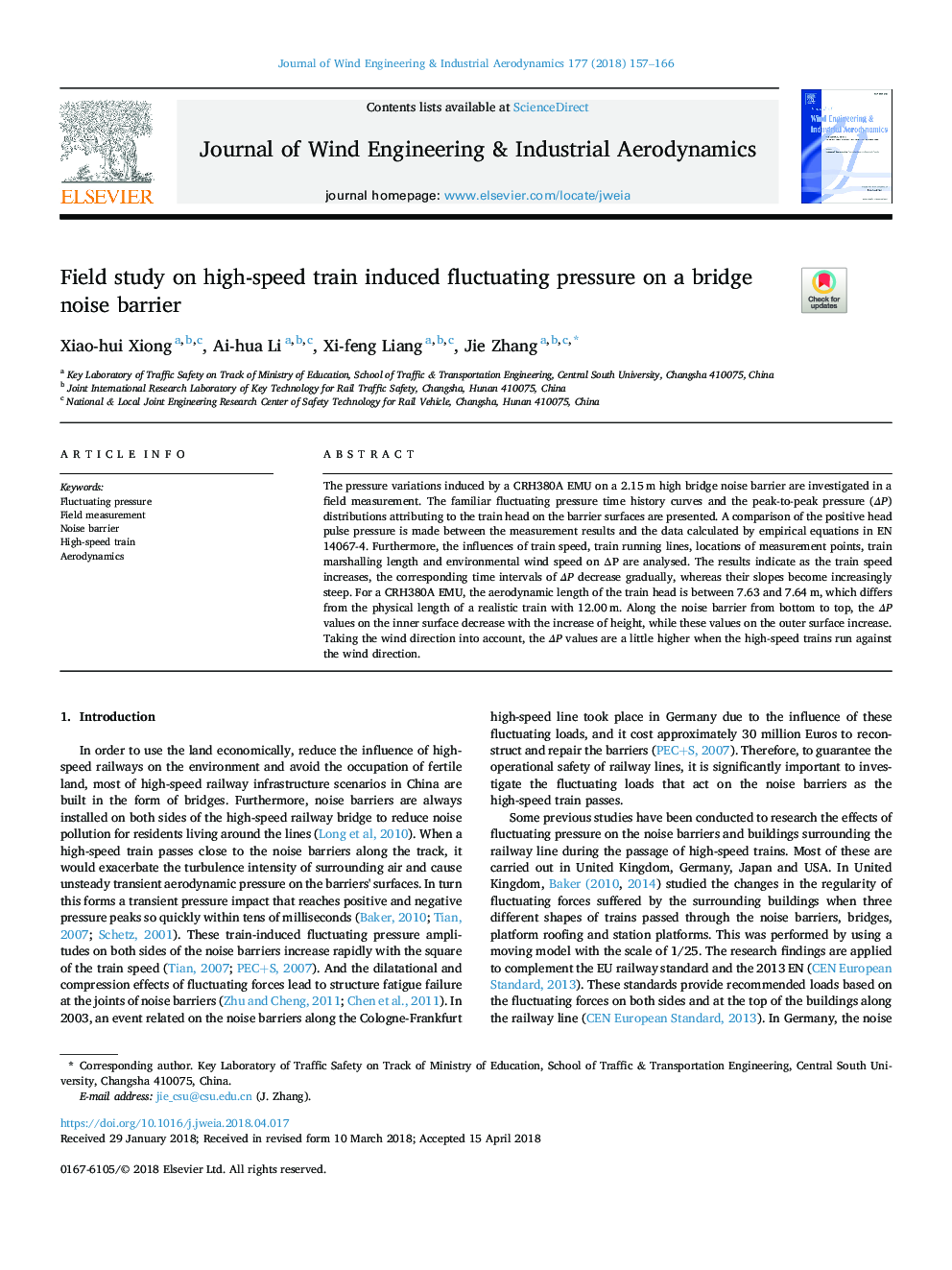| Article ID | Journal | Published Year | Pages | File Type |
|---|---|---|---|---|
| 6756885 | Journal of Wind Engineering and Industrial Aerodynamics | 2018 | 10 Pages |
Abstract
The pressure variations induced by a CRH380A EMU on a 2.15â¯m high bridge noise barrier are investigated in a field measurement. The familiar fluctuating pressure time history curves and the peak-to-peak pressure (ÎP) distributions attributing to the train head on the barrier surfaces are presented. A comparison of the positive head pulse pressure is made between the measurement results and the data calculated by empirical equations in EN 14067-4. Furthermore, the influences of train speed, train running lines, locations of measurement points, train marshalling length and environmental wind speed on ÎP are analysed. The results indicate as the train speed increases, the corresponding time intervals of ÎP decrease gradually, whereas their slopes become increasingly steep. For a CRH380A EMU, the aerodynamic length of the train head is between 7.63 and 7.64â¯m, which differs from the physical length of a realistic train with 12.00â¯m. Along the noise barrier from bottom to top, the ÎP values on the inner surface decrease with the increase of height, while these values on the outer surface increase. Taking the wind direction into account, the ÎP values are a little higher when the high-speed trains run against the wind direction.
Related Topics
Physical Sciences and Engineering
Energy
Renewable Energy, Sustainability and the Environment
Authors
Xiao-hui Xiong, Ai-hua Li, Xi-feng Liang, Jie Zhang,
